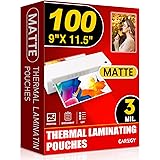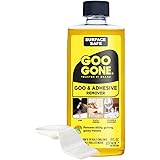Are you tired of dry, uninspired tortillas that snap rather than fold? Many of us settle for store-bought versions, but once you experience the warmth, fluffiness, and rich flavor of a truly homemade flour tortilla, there’s simply no going back. The good news is, crafting these culinary delights from scratch, just like the traditional way, is not only achievable but incredibly rewarding.
In the video above, you saw a masterful approach to creating those perfect, hot, homemade flour tortillas. This guide expands on those invaluable tips, diving deeper into the nuances of ingredients, technique, and the magic that happens when simple components combine into something extraordinary.
The Foundation: Understanding Your Homemade Flour Tortilla Ingredients
Every exceptional tortilla begins with a careful selection of ingredients. The video rightly emphasizes starting with three cups of all-purpose flour, noting that precise measurements are key to achieving the right texture.
All-purpose flour provides the ideal protein content for developing a supple yet sturdy dough, much like a good canvas prepares for a masterpiece. You’ll also incorporate a teaspoon of regular salt, which does more than just season; it enhances the overall flavor profile and helps control the yeast (though not present here, salt is generally a flavor enhancer in baking).
Next comes one and a quarter teaspoons of baking powder. This leavening agent is critical for giving your homemade flour tortillas that characteristic puff and softness, akin to how a balloon inflates to hold its shape.
Finally, the hot water, ideally around 105 degrees Fahrenheit, plays a crucial role. This temperature is warm enough to help dissolve the butter and activate the baking powder, but not so hot that it “cooks” the flour prematurely, ensuring a pliable dough.
Fats: Butter, Lard, or Bacon Fat?
While traditional recipes often call for lard due to its incredible flavor and tenderizing properties, the video showcases a delicious alternative: high-quality butter. Butter brings a rich, creamy flavor and a tender crumb, making for a distinctly delicious tortilla.
If you’re seeking a different depth of flavor or prefer to avoid butter, bacon fat is another excellent option mentioned in the video. It imparts a smoky, savory note that can elevate your tortillas, especially if you’re pairing them with robust fillings.
The Art of Mixing and Kneading Your Tortilla Dough
The journey from dry ingredients to a cohesive dough begins by creating a small well in the center of your flour, almost like building a tiny volcano. Into this well, you add your salt and baking powder, followed by the hot water and your chosen fat.
Mixing is where the dough starts to come alive. Whether you’re using a specific tool like a “kneading whisk” or simply your hands, the goal is to gently combine the wet and dry ingredients. Continue working the mixture until it forms a shaggy mass, then transition to kneading.
Kneading is a fundamental step for developing gluten, which provides elasticity and structure to your homemade flour tortillas. Think of it as stretching and strengthening tiny elastic bands within the dough; this gives your tortillas their characteristic chew and pliability. The video demonstrates continuous kneading until the masa comes together, transforming into a smooth, unified ball.
The Importance of Resting and Rolling
Once your dough is smooth and cohesive, the next crucial step is resting. Covering the dough in a bowl and letting it sit for about 15 minutes allows the gluten to relax. This relaxation is essential, as a rested dough is far easier to roll out, preventing it from snapping back like an overstretched rubber band.
After resting, it’s time to divide your dough. The size of your individual portions dictates the size of your final tortillas. The video encourages you to roll them out like a pro in a bakery, using a lightly floured surface to prevent sticking.
Roll each dough ball into a uniform 7-inch circle. Achieving a consistent thickness is vital for even cooking and a beautiful, fluffy texture. A little flour on top of the dough ball during rolling also helps to prevent your rolling pin from sticking.
Cooking Your Homemade Flour Tortillas to Perfection
With your tortillas rolled, it’s time for the final act: cooking. A hot comal or cast-iron skillet is your best friend here. Ensure your cooking surface is evenly heated, as this promotes that desirable puff and subtle browning.
Each homemade flour tortilla needs only about 30 to 40 seconds on each side. The first side will cook quickly, showing small bubbles forming on the surface. Flip it, and the second side will puff up beautifully, indicating it’s cooking evenly and developing that tender texture.
The goal is to achieve a tortilla that is “absolutely beautiful on both sides,” as the video describes—lightly spotted with brown, soft, and pliable. A perfectly cooked tortilla, like a well-told story, balances texture and appearance to create a truly satisfying experience.
Enjoying Your Creation: Simple Pleasures
Once cooked, a warm homemade flour tortilla needs little embellishment. As the video suggests, a tiny bit of butter and a sprinkle of salt can go a surprisingly long way. This simple seasoning enhances the natural flavors, making each bite a delightful experience.
These fluffy, crispy, hot homemade flour tortillas are not just food; they are an invitation back to simpler times and comforting memories. They taste far superior to anything you can buy at the store, carrying the essence of tradition and the warmth of your own kitchen.
Embrace the joy of making homemade flour tortillas from scratch. It’s a journey that takes you back to childhood, promising delicious results that will become a staple in your culinary repertoire.







